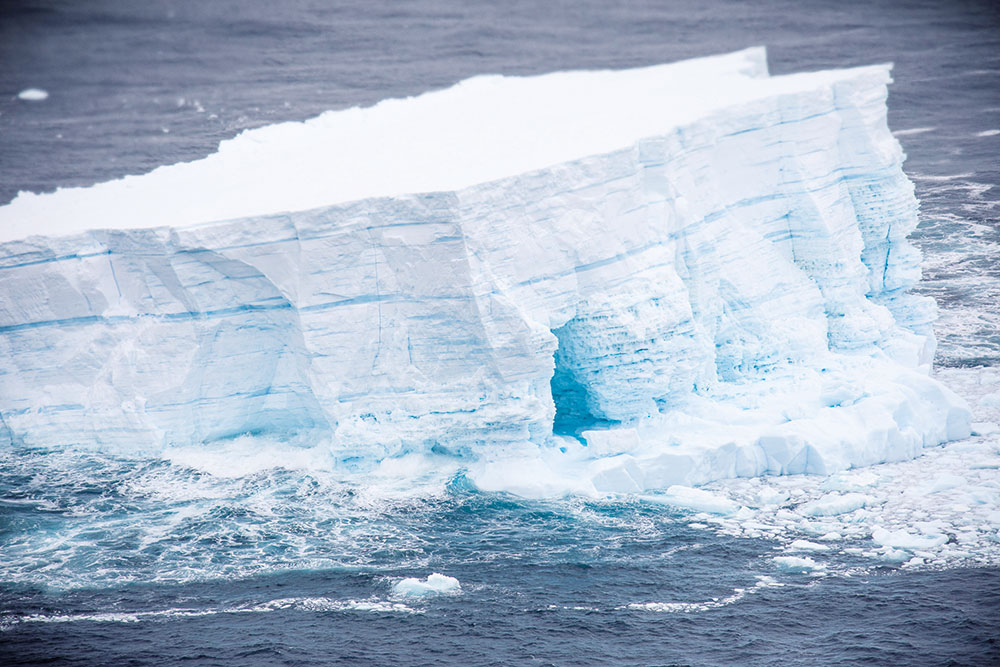Here is a photo of one of the largest recorded icebergs, which is floating near the island of South Georgia in the South Atlantic.
With a surface area of approximately 4,200km2, roughly the size of Somerset and longer and wider than South Georgia, and weighing hundreds of billions of tonnes, A68a is the largest section of A68, an iceberg which calved from the Larsen C Ice Shelf on the Antarctic Peninsula in July 2017.
Unlike other large icebergs, A68a is considered unusually ‘thin’, with its submerged depth presumed to be no more than 200m. This means it has the potential to drift near South Georgia’s coast prior to any grounding. It has already entered the 1.24million km2 Marine Protected Area which surrounds South Georgia and the South Sandwich Islands, sparking concerns regarding the threat it could pose to the wildlife.
Additionally, ice debris has already started to break away, caused by A68a drifting through warmer waters near the South Orkney islands. It is feared that further crevasses/cracks have also formed, inevitably increasing the amount of floating debris.
To aide with the collation of information, an RAF A400M aircraft is to provide reconnaissance of the iceberg, providing a closer look at a level not always achievable through satellite imagery. The sortie aims to gather data in the form of imagery stills, video footage and observations from the crew, focusing on any obvious large fissures or potential fault lines along the edge and middle of the iceberg.




















